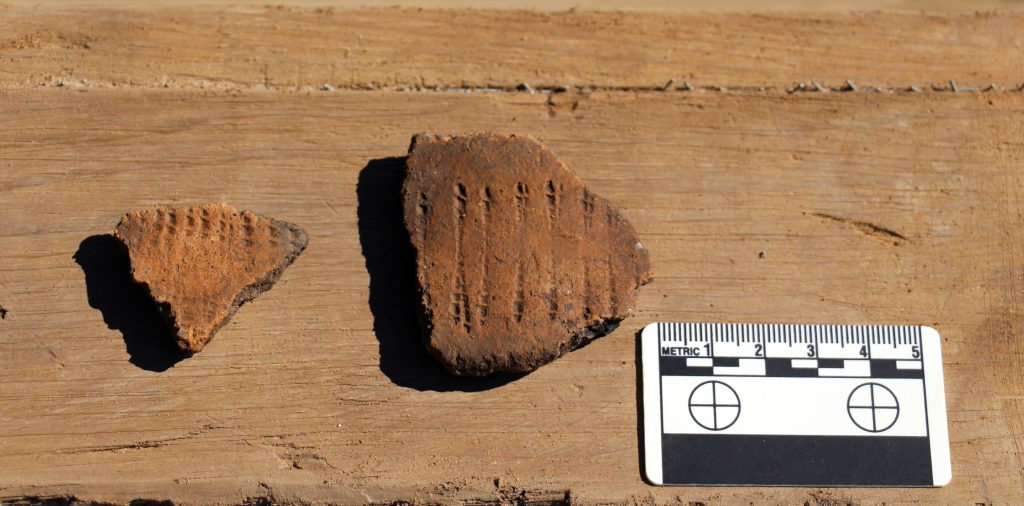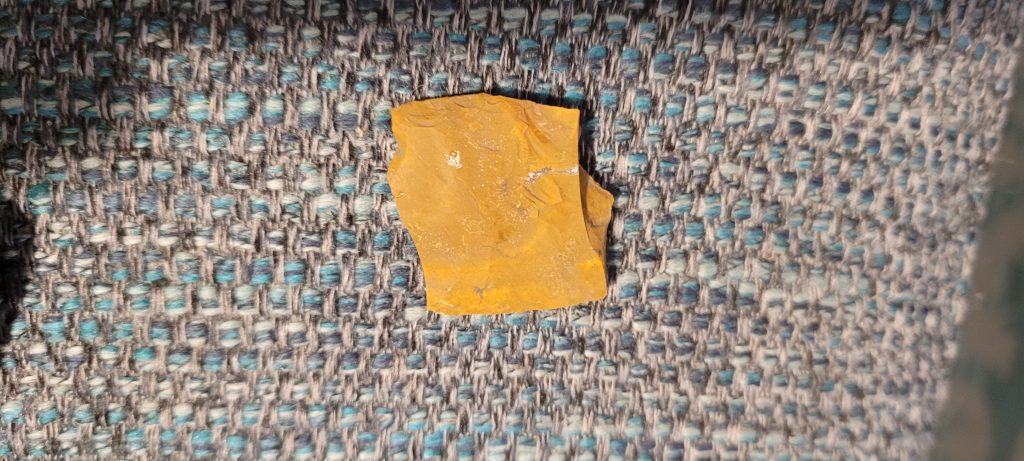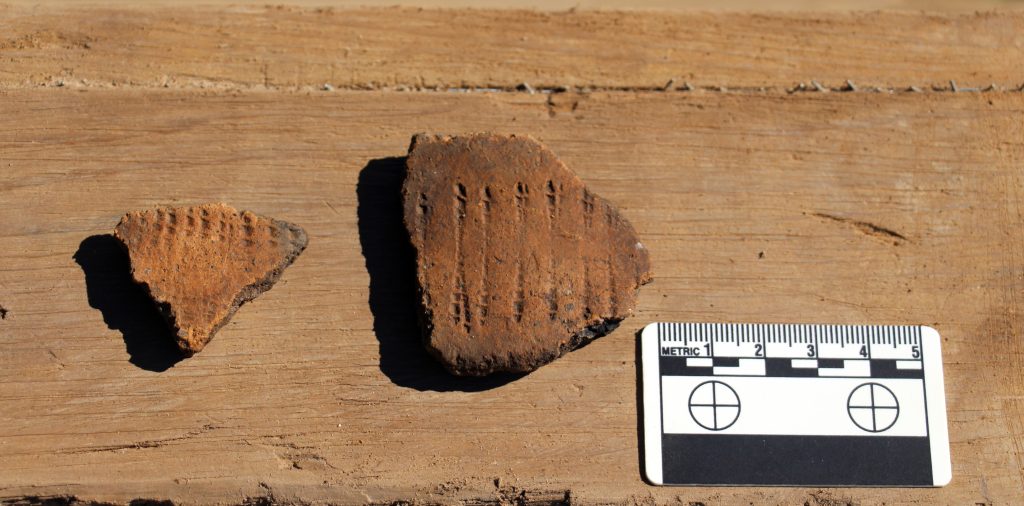From the Wolfe Neck Shell Midden Sitein Sussex County, Delaware
By Bill Liebeknecht
In advance of a proposed trail at Cape Henlopen State Park in Sussex County, Delaware, Delaware Department of Natural Resources and Environmental Control hired Dovetail Cultural Resource Group (Dovetail) to conduct a Phase I archaeological survey of the new trail. Part of this survey skirted the perimeter of the National Register-listedWolfe Neck Site (7S-D-010), a precontact shell midden Shell middens consist of an accumulation of marine shells such as oyster, clam, and whelk related to harvesting and processing by precontact peoples living near the coastline. The site has been dated between BC 782 and AD 993, based on radiocarbon dates associated with pottery previously found at the site (Custer 1984:115; Griffith and Artusy 1977:1-–9). The Phase I survey by Dovetail recovered four pottery sherds with what is known as exterior rocker-stamped and dentate-stamped decoration (Photo 1). The sherds appear to be from a single vessel. Stamped decorations are well known from surrounding regions but are extremely rare in Delaware, suggesting that the pottery vessel may have been traded or transported to the site from outside of the state and may suggest population movement. The closest match to pottery decorated in this manner appears to be from the Point Peninsula complex located over 300 miles to the north in eastern Ontario and New York state, although similar sherds have been reported from northern New Jersey and on Staten Island (Kraft 2001:197; Mason 1981; Stewart 2018:105). The only other known sherd of dentate-stamped pottery found in Delaware is a single fragment recovered from the Island Field site (7K-F-17), a ceremonial burial site associated with the Webb Complex in Kent County Delaware. The complex is mostly mortuary with a unique group of stone tools and pottery (Custer 1984:138–140). The recovery of rocker-stamped decorated pottery at the Wolfe Neck site is the only known discovery of this ware in Delaware.
Other artifacts recovered by Dovetail from the Wolfe Neck site (7S-D-010) that indicate possible ties to Point Peninsula and the Webb Complex are a sherd of fabric-impressed pottery known broadly as “Vinette I” and the midsection of a pentangular-shaped projectile point known as a Jack’s Reef point made from a high-quality jasper (Photos 2 and 3) (Custer et al. 1990:56). The Vinette I sherd may represent the plain body of a vessel decorated with the rocker-and dentate-stamped sherds noted above. Jack’s Reef points are considered especially characteristic of the Webb Complex. A more detailed analysis will be forthcoming in the Archaeological Society of Delaware Bulletin.



References
Custer, Jay F.
1984 Delaware Prehistoric Archaeology. University of Delaware Press, Newark.
Custer, Jay F., Karen Rosenberg, Glenn Mellin and Arthur Washburn
1990 An Update on New Research at the Island Field Site (7K-F-17), Kent County, Delaware. Bulletin of the Archaeological Society of Delaware, No. 27, New Series, Wilmington, Delaware.
Griffith, Daniel R., and Richard E. Artusy, Jr.
1977 Middle Woodland Ceramics from Wolfe Neck, Sussex County, Delaware. The Archeolog XXVIII(1). The Sussex Society of Archeology and History.
Kraft, Herbert C.
2001 The Lenape-DelawareIndian Heritage: 10,000 BC to AD 2000. Lenape Books, New Jersey.
Mason, Ronald J.
1981 Great Lakes Archaeology. Academic Press, New York.
Stewart, R. Michael
2018 A Radiocarbon Foundation for Archaeology in the Upper Delaware Valley, New Jersey, Pennsylvania, New York. Prepared for the New Jersey Historic Preservation Office.

